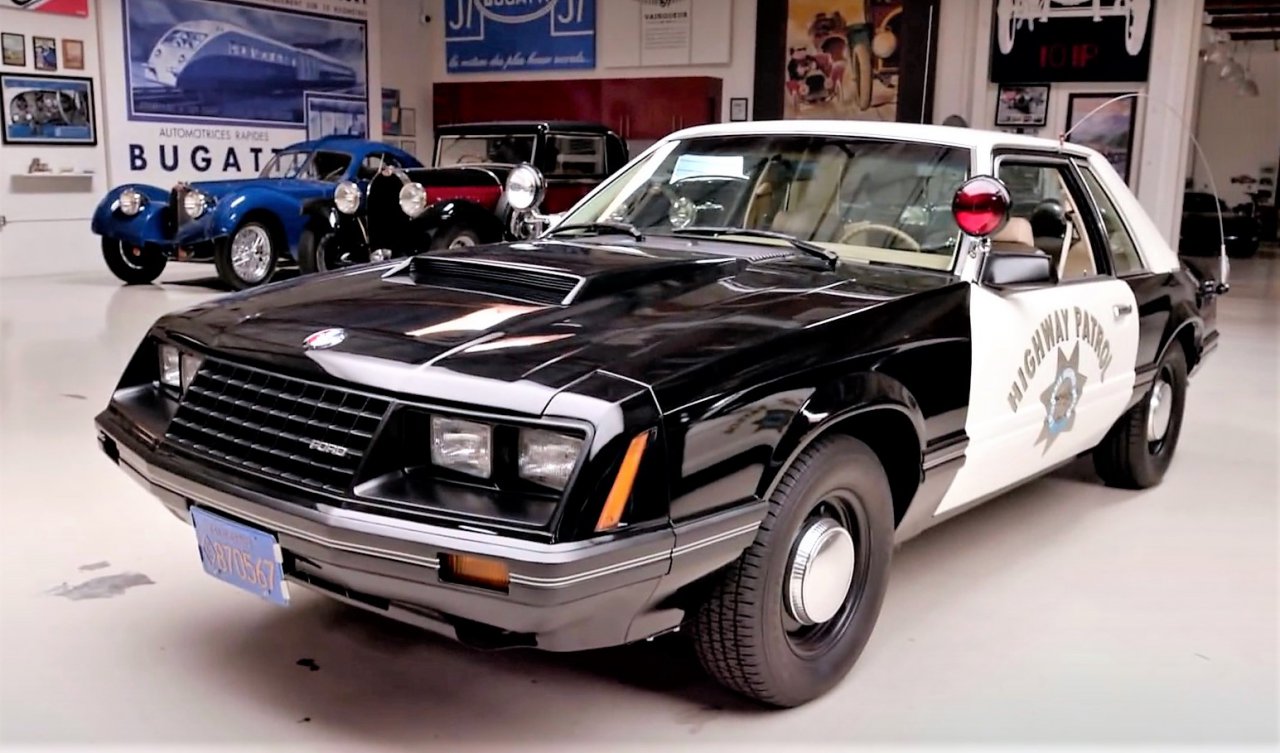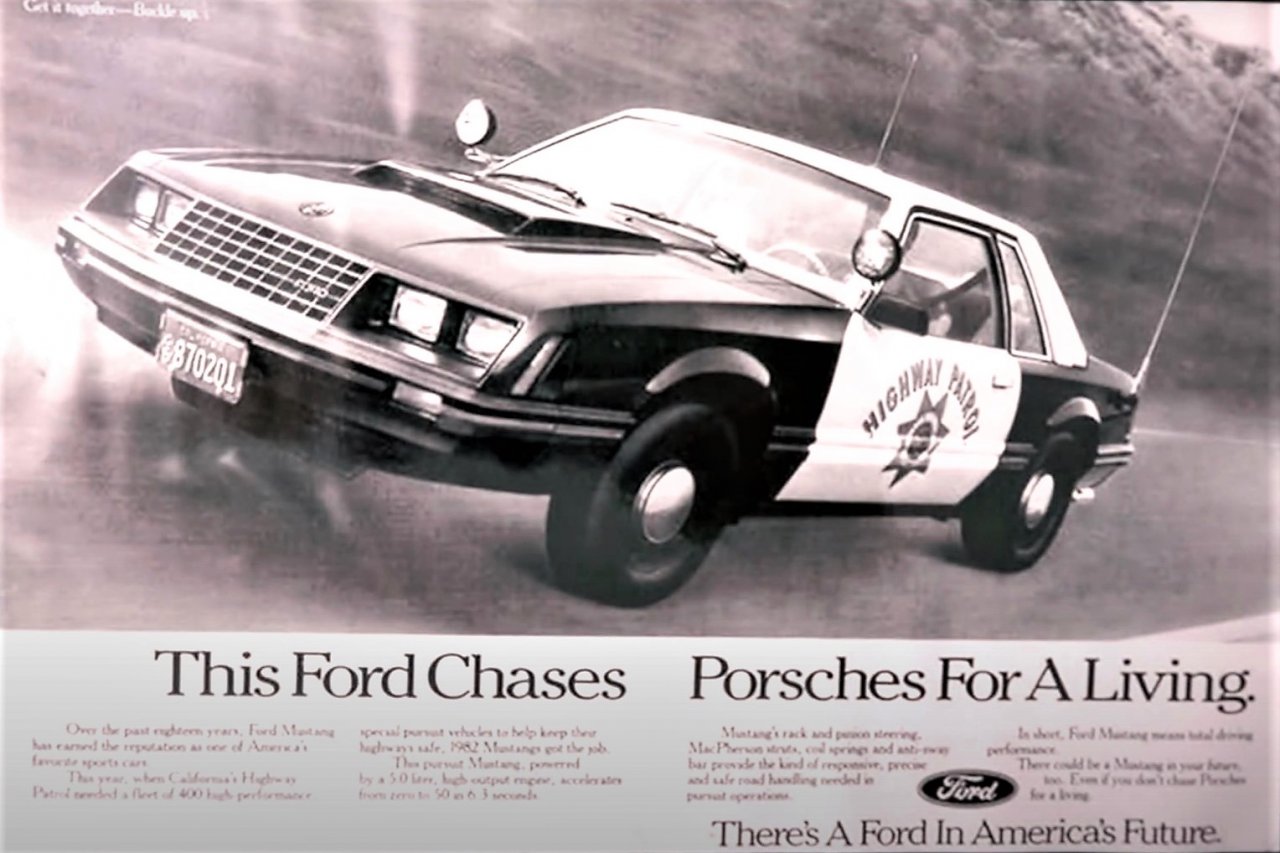Not every police car is a humdrum sedan. This episode of “Jay Leno’s Garage” features a Fox-body 1982 Ford Mustang that, as an old tagline said, chased Porsches for a living. Retired California Highway Patrol officer Rich Sapikowski provides a firsthand account of what it was like to drive the Mustang.
In the early 1980s, the CHP determined that it need a faster police car for high-speed pursuits. The answer was a police version of the Mustang LX, complete with a 4-speed manual transmission and a 2-barrel carburetor version of the ubiquitous 5.0-liter V-8 (later versions had fuel injection and a 5-speed manual). Police cars got a bigger alternator and radiator, silicone hoses, a cold-air intake, and high-speed rated tires. The program lasted from 1982 to 1993.

The original carbureted cars made 157 horsepower, while the later fuel-injected cars made 225 horsepower. That made them a lot faster than the average patrol car, so officers fought over them, Sapikowski said.
A former Detroit street racer, he recalled seeing an indicated 160 mph in a later fuel-injected car, and believes he reached 180 mph at times, based on a tachometer reading. However, the air conditioning was designed to cut out at 100 mph – not ideal in sunny California.
While the Mustangs wore the traditional black-and-white CHP livery, they didn’t have an overhead light bar and thus weren’t as readily identifiable as conventional police cars. That led to many complaints of entrapment by drivers caught by the speedy ‘Stangs, Sapikowski said.

The CHP Mustang does have external spotlights and most of the other expected police equipment, including a siren, radio (which must have been challenging to use in a manual-transmission car) and a gun rack that could hold a shotgun and AR-15 assault rifle. The Mustang’s cramped cabin made removing the guns awkward, leading to some accidental discharges, Sapikowski said.
This car wears plain steel wheels with dog dish hubcaps, which are not just about functionality. Later cars left the factory with bright-finish alloy wheels that were then powder coated black because officials were concerned about the public reaction if CHP police cars looked too fancy, Sapikowski explained.
The seats have cloth inserts instead of the usual police-car vinyl upholstery, which was better suited to hot California weather, Sapikowski said. The two-door Mustang forced cops into closer contact with the people they arrested, as they would typically be placed in the front passenger’s seat, or alongside an officer in the back seat.
Leno didn’t seem too impressed with the Mustang’s performance, but Sapikowski said it was pretty fast for its time. In the early 1980s, speedometers in most cars only went up to 85 mph due to emissions-related rules, he noted. He said the fastest he recorded someone was 125 mph, still well within the Mustang’s performance envelope.
Watch the full video to see this retired police car back on its old beat, and to check out a modern tribute based on a current-generation Mustang.
This article was originally published by Motor Authority, an editorial partner of ClassicCars.com.





Can you get a copy of the old ad?